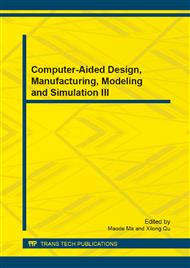p.504
p.509
p.513
p.517
p.521
p.526
p.531
p.535
p.541
Energy Efficient Path Analysis and Research in Ad Hoc Networks
Abstract:
Energy Conservation has been the focus in the ad hoc wireless network study. As the capacity of battery is limited, node will lose its function once its energy is exhausted. This thesis is aiming to calculate among the multiple transmission paths and find out a path which consumes the least energy. Previous studies are focused on finding the minimum hop path in transmission. In this study we propose to use the square of the distance between nodes as a proxy to the power consumption as the transmission power is proportional to the square of the distance between the nodes. We simulate the node transmission by limiting node out-degree in broadcasting and calculate the minimum sum of the square of distance between nodes in the path to find a path which has the least energy consumption.
Info:
Periodical:
Pages:
521-525
Citation:
Online since:
October 2013
Authors:
Keywords:
Price:
Сopyright:
© 2014 Trans Tech Publications Ltd. All Rights Reserved
Share:
Citation:


